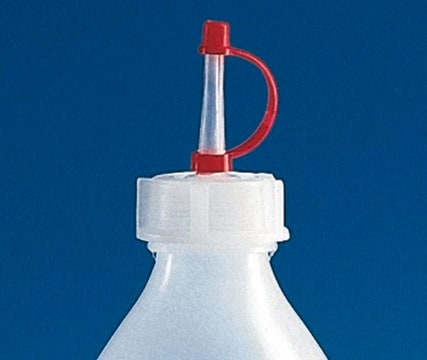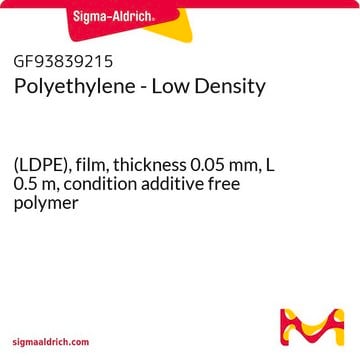GF00214298
Aluminum
rod, 100mm, diameter 25.0mm, as drawn, 99.999%
Synonym(s):
Aluminum, AL007925
Sign Into View Organizational & Contract Pricing
All Photos(2)
About This Item
Empirical Formula (Hill Notation):
Al
CAS Number:
Molecular Weight:
26.98
MDL number:
UNSPSC Code:
12141702
PubChem Substance ID:
NACRES:
NA.23
Recommended Products
Assay
≥99.999%
form
rod
autoignition temp.
1400 °F
manufacturer/tradename
Goodfellow 002-142-98
resistivity
2.6548 μΩ-cm
L × diam.
100 mm × 25.0 mm
bp
2460 °C (lit.)
mp
660.37 °C (lit.)
density
2.7 g/mL at 25 °C (lit.)
SMILES string
[Al]
InChI
1S/Al
InChI key
XAGFODPZIPBFFR-UHFFFAOYSA-N
Related Categories
General description
For updated SDS information please visit www.goodfellow.com.
Legal Information
Product of Goodfellow
Storage Class Code
13 - Non Combustible Solids
WGK
WGK 3
Flash Point(F)
Not applicable
Flash Point(C)
Not applicable
Certificates of Analysis (COA)
Search for Certificates of Analysis (COA) by entering the products Lot/Batch Number. Lot and Batch Numbers can be found on a product’s label following the words ‘Lot’ or ‘Batch’.
Already Own This Product?
Find documentation for the products that you have recently purchased in the Document Library.
Hideaki Matsumoto et al.
Plant science : an international journal of experimental plant biology, 185-186, 1-8 (2012-02-14)
Al inhibits root apex elongation with concomitant morphological injuries such as ruptures punctuated by the regions stained with Evans blue. The recovery can be investigated by transfer of Al-injured roots to a solution lacking Al. In the Al-injured root apex
M A Santos et al.
Current medicinal chemistry, 19(17), 2773-2793 (2012-03-30)
This review is focused on recent developments on hydroxypyri(mi)dines, as aluminum and actinide chelating agents to combat the toxicity due to accumulations of these metal ions in human body resulting from excessive metal exposure. After a brief update revision of
C A Shaw et al.
Immunologic research, 56(2-3), 304-316 (2013-04-24)
We have examined the neurotoxicity of aluminum in humans and animals under various conditions, following different routes of administration, and provide an overview of the various associated disease states. The literature demonstrates clearly negative impacts of aluminum on the nervous
Maire E Percy et al.
Journal of inorganic biochemistry, 105(11), 1505-1512 (2011-11-22)
In 1991, treatment with low dose intramuscular desferrioxamine (DFO), a trivalent chelator that can remove excessive iron and/or aluminum from the body, was reported to slow the progression of Alzheimer's disease (AD) by a factor of two. Twenty years later
Stephen C Bondy
Toxicology, 315, 1-7 (2013-11-06)
Aluminum is one of the most common metal elements in the earth's crust. It is not an essential element for life and has commonly been thought of as a rather inert and insoluble mineral. Therefore, it has often been regarded
Our team of scientists has experience in all areas of research including Life Science, Material Science, Chemical Synthesis, Chromatography, Analytical and many others.
Contact Technical Service







